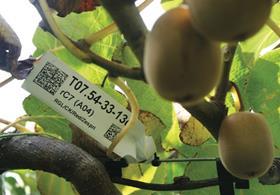
New Zealand kiwifruit marketer Zespri has identified the commercial roll-out of a red cultivar and the potential replacement of its main green variety Hayward as two of the most immediate priorities for its research and development programme.
As reported in The Orchardist, delegates attending the recent Kiwifruit Innovation Symposium in Mount Maunganui heard from Bryan Parkes, Zespri’s innovation manager, who explained that the company continued to work hard with its partners at Plant & Food Research to get its red varietal programme back on track following the 2010 Psa outbreak.
“It killed a lot of the plant material that we had in the pipeline, which was disappointing when we had been working on it for ten years,” he told the symposium.
Parkes also revealed that the group’s chief executive Lain Jager was eager to overcome a recent false dawn in Singapore – where it trialled a red variety that has since been shelved – and bring a Zespri-branded red kiwifruit to market as soon as possible.
“Lain’s been telling us ‘hurry up and give me a red’. We have found some Psa-tolerant red cultivars and we even have [one] in pre-commercial trials already. So watch this space.”
Jager himself was on hand to explain why the marketer is determined to explore all options as far as replacing Hayward in favour of better-tasting, longer-eating green varieties with higher yields.
“Hayward’s fantastic,” he said, referring to the variety’s great storage potential and its resistance to Psa. “But our brightest future is by cannibalising ourselves, rather than by being cannibalised by others.”
Zespri has already begun to experiment with selling other green varieties, introducing a potential Hayward replacement in the form of G3, which offers superior yields.
It has also begun marketing another cultivar, G14, as Sweet Green, although reports suggest consumers have not always been willing to pay a premium for something sweeter than Hayward.
As The Orchardist noted, however, lengthy storage is an absolute must and, as such, the scientific research required to identify Hayward’s definitive replacement is likely to take another 15 years.
For Parkes and his team, therefore, the search continues.



